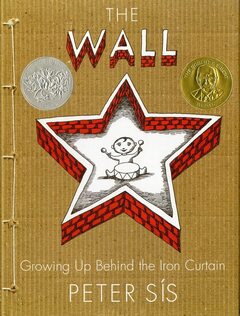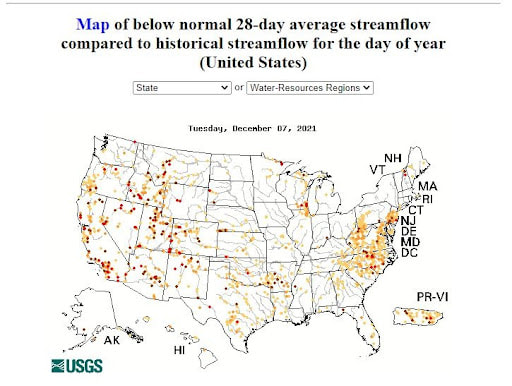| We happily welcome Bird Cramer for YA Wednesday today. An upper level teacher and coordinator of curriculum and instruction, Bird teaches a little bit of everything and designs curriculum at a small independent school in the Finger Lakes Region of Upstate New York. Hold on to your hats! Bird will be sharing methods--and texts--that help our students consider histories of human geography, and ways that they can advocate for a better world. |
Bird Cramer
The ELA classroom is one of the best places to discuss these interactions as literature is always the gateway. How else do we explore a novel but through its people and their interactions with one another? We cannot separate the characters from their settings, cultures, and communities. By combining a choice chapter or two of a trade book with a class novel and new vocabulary, we can provide our students with another way to look at themselves, their surroundings, and their fellow humankind. This post combines new titles with ones that have proven themselves over the years.
| I start this exploration with the same way that NCTE started this year, with The 1619 Project: Born On The Water by Nikole Hannah-Jones and Renée Watson and illustrated by Nikkolas Smith. This book is a profound reminder of the effects unchecked globalization has on populations around the world and the impact of centuries of forced human migration. The classroom question of tracing your ancestral land carries a heavy weight for so many students when your ancestors were bought and sold. However, this is the narrative that way too many of our schools teach students. This book corrects that narrative and teaches the bitterness and the cost of unchecked greed on our humanity. Next year, I will follow 1619 with a chapter from Globalization: Why We Care About Faraway Events by Carla Mooney and illustrated by Sam Carbaugh. It is geared towards middle school students and paves the way for substantial connections. Divided into seven chapters, the colorful pages are full of sidebars, comics, QR codes, and primary sources. Chapters exist independently and can be used to match specific fiction titles in the classroom. The book itself breaks globalization into easily digestible topics such as money, trade, laws, cultures, and the future of globalization. Each chapter ends with a series of discussion questions that pair easily with novels. |
| Naomi Shihab Nye’s Voices In The Air: Poems For Listeners contains free verse poems that touch down on all continents except Antarctica. She travels the world through the eyes of activists, authors, artists, and disruptors that span centuries and includes biographical notes at the end of the book. She merges both past and present, effortlessly bringing historical figures forward to meet wars, refugees, and her own people in Jerusalem. She walks many roads from activist to friend and her prose engulfs us like the oceans she travels across. Her collection is human geography in lyrical form and crosses so many cultural divides. American Border Culture Dreamer: The Young Immigrant Experience From A To Z by Wendy Ewald is the result of a public installation in Philadelphia where she collaborated with eighteen high school students who were first or second generation immigrants to the United States. Each page contains original artwork and text designed and written by the subject(s) of the photo. The work covers issues close to the artists’ hearts while also introducing how these universal themes intermingle with cultural, political, and social experiences of transitioning to living in.a new country. The issues range from being a DREAMer to the corruption in Tajikistan in the wake of the collapse of the Soviet Union (see The Wall) and the wearing of cultural apparel in a new home country. |
Clean water is such a precious commodity both nationally and internationally as illustrated in When Stars Are Scattered and The Bridge Home. Nancy Castaldo, who has authored many STEM books, will release When The World Runs Dry in January of 2022. This book examines the effects of globalization on the water cycle and how it creates human migration in the name of drinkable water. She also centers on water issues in the United States and there are some incredible fiction books that pair well with these moments, my favorite being We Are Water Protectors by Carole Lindstrom and illustrated by Michaela Goade. My sixth graders were inspired to find environmental activists their own ages from their own country. Goade’s illustrations pulled them and the combination of the illustrations and text created space for students to draw comparisons with water issues in their own communities, communities in the United States, and communities around the world and the traits that bind these communities together.
Dry by Neal Shusterman and Jarrod Shusterman tells the story of a California drought that does not cease to end until the water runs dry. While set in an undisclosed time in the future, the sad truth is that the drought that ravages through Southern California was devastating Cape Town, South Africa, right before the time of publication. The main character, Alyssa, along with her younger brother, are left to find their way through a city engulfed in chaos and violence. This book blurs the lines between science and realistic fiction, an interesting place to hold discussions about or pave the way towards solutions to the water crisis in our country and on our planet.
Ahmed, S. (2018). Being the change: Lessons and strategies to teach social comprehension. Heinemann.
Castaldo, N.(2021, November 21). Teaching Climate Change Impacts on Our Food and Water Supply. [Panel Presentation]. Teaching For Climate Justice. 2021 NCTE Annual Convention.
Common Core State Standards Initiative. (2021, June 28). English language arts standards: history/social studies: 6-8 grade. http://www.corestandards.org/ELA-Literacy/RH/6-8/
Gapminder (2017) Bubble chart of CO2 emissions of united states and cambodia. [Interactive infographic]. Gapminder.org.
Gapminder (n.d.) Aye family, myanmar: Dollar street. [Interactive Video Set]. Gapminder.org https://www.gapminder.org/dollar-street?active=5fd03e3df2d9500e43590658
George, M. (2021, October 20). Around the world in a dozen ya novels: windows, mirrors, and doors
that show the trials, tribulations, and hope of teens in challenging circumstances. Dr. Bickmore’s YA Wednesday. Retrieved November 18, 2021, from http://www.yawednesday.com/weekly-posts/around-the-world-in-a-dozen-ya-novelswindows-mirrors-and-doors-that-show-the-trials-tribulations-and-hope-of-teens-in-challenging-circumstances-by-marshal-george.
Human geography. (2021, October 12). In Wikipedia. https://en.wikipedia.org/wiki/Human_geography
Short, K. (2021, November 21). Exploring The Human Impact of Climate Change. [Panel Presentation]. Teaching For Climate Justice. 2021 NCTE Annual Convention.

















 RSS Feed
RSS Feed